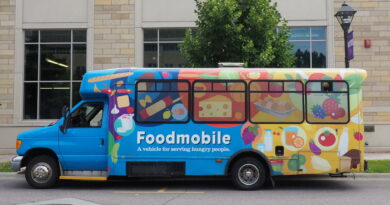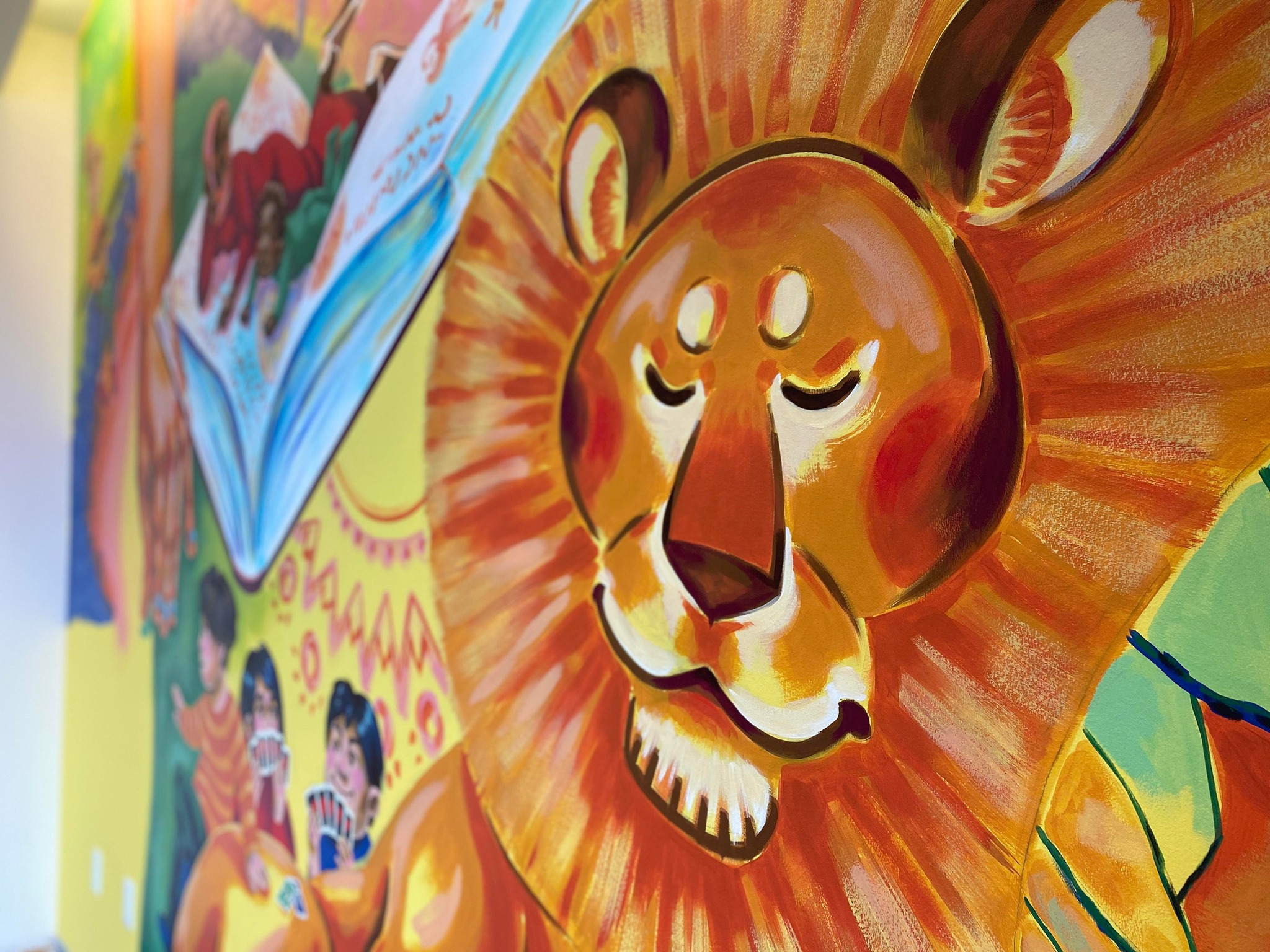Notebook Recollections: This Walk
Local icon Tim Rumsey walked to work most days from 1987 to 2000. He began as a form of exercise but kept at it for his love of local lore harvested through his interactions with people on the street. He began documenting his musings and eventually filled 53 pocketbooks with his observations. He continues writing about his observations to this day. Here is just one tale.
By Tim Rumsey, MD
Sometimes people ask, “Just where is this walk to work that you talk about?”
Good question.
Port of departure is our house on Linwood Ave. on top of the St. Clair Hill.
During the time of these writings, 1997, the destination was United Family Medicine, 30 feet from Nick Mancini’s Steakhouse and Las Vegas Lounge.
My walk is one mile from our house to the staff entrance. In between is a whole other world that before the walk was just part of the drive.
Now it’s a gauntlet of history and humanity.
The walk goes like this.
Out the front door onto the sidewalk where our three girls learned to bike, roller-skate, hopscotch and jump rope. Then it’s a half block to the Work Progress Administration stairway. Fifty-two deep concrete steps down through the woods to St. Clair. With big, dark green pipe railings and softball-sized joints. A bench on either side of the halfway point landing is lit up by an old green street lamp.
I always thought the steps were WPA, but Tex, who seems to know everything about West 7th, told me they were built in 1916 by the city, so Crocus Hill residents could get down to the St. Clair Streetcar line and West Seventhers could get up to Crocus Hill.
Some of Tex’s foster mothers took these steps down every day to house clean. Mary Pesek took them up to get to Visitation, her private girls high school. Gerry Lauer took them throughout his life on frequent walkabouts.
My WPA stairs’ history is squishy but whenever I remember all this, I grab the railing in a Walt Wittman-y way
Then it’s down St. Clair, past the woods on either side of 35E.
There is half of a 100 year old house foundation among the trees and bushes in the upper 35E woods. One of our clinic families was the last occupant before it was torn down in 1979. Its limestone and brick basement is built right into the hill, part of the earth itself. It’s all overgrown now, but every spring the remaining lilac bushes still come to life and you know some kid used to pick them for his mother and they stood in a big glass jar in the kitchen inside what used to be this house.
On the 35E overpass, you can see the Schmidt Brewery castle overlooking the landscape and when the trees are without leaves, the Bridgeview School on the former Ancker Hospital site. Carl is the janitor at Bridgeview. Houses on the next four blocks of my walk include Carl’s, the Pink Rock House and the House of the Incredible Smoking Bongs with its sacrificial Stratocaster guitar neck nailed seven feet up the trunk of a big elm.
Magic’s Auto Repair operates out of a big double garage behind the Bongs.
The 90 year old Lauer sisters live on the east side of the Bongs. Helen and Fidelis. They were childhood friends of Mary Pesek. They’re Gerry’s cousins. They once sat on the knees of the three original West 7th stone mason Lauer brothers. I’ve seen the sisters out in front of their home shoveling or hand mowing the lawn.
At the corner of West 7th and St. Clair is the Seventh Street Liquor Barrel. Our clinic and the Barrel share a number of clients including Tex. The walk turns left here past Cooper’s Food, the Czech Hall and St. Stanislaus Czech-Catholic church. Then Mabel leftover dining car ( now, Villa, Roma Pizza), two nice old, red brick offices and finally the salt mines themselves, United Family Health Center .
I got to know the neighborhood. Pets, the children, the houses. The car drivers, bus riders and backyard sitters. Some of the houses I pass are right on the sidewalk. Sometimes I brush against them. I can smell breakfast, lunch and dinner, see TV shows, hear yelling, crying and laughing. All right there from the pavement. At times I’m sure coupling is occurring 6-7 feet away from me.
July 14
Our clinic doctors have been going to the Dorothy Day shelter every Tuesday morning to help with the homeless health care clinic since Dr. Ravi and Dr. Macken set up that arrangement in 1985.
Walking back from Dorothy Day to our clinic at 2 p.m. today, it was hot, hot, hot. 94 degrees. Street people stick to the shade. My shirt sticks to my back. I look down West 7th St. and see cartoon stink waves of heat coming off the asphalt. I stop at the Dairy Queen for an ice cream cone. The air conditioning is heaven. The nipple of my chocolate-vanilla swirl sags instantly as I step back into the heat.
July 17
Daisy Taylor told nurse Aleda during clinic visit today that her son, Bobbie, was very depressed. Aleda helped arrange a psychologist appointment.
Daisy spent two years at Ag-Wah-Ching TB sanitarium way up north in Walker, Minnesota. 1939 to 1940. She was 24 years old. I knew a little bit about the place. It was designed by Clarence Johnston, the architect of Ancker Hospital. For a sanitarium, it was actually a beautiful grouping of stone, log and brick buildings and cottages in the woods. That’s what it looked like in pictures anyway. I asked Daisy if that was how she remembered it.
She said she wasn’t there to sightsee.
She told me that while she was quarantined at Ag-Wah-Ching, her mother died suddenly and she wasn’t allowed to return to St. Paul for her funeral. Then, Daisy’s three year-old daughter died of meningitis at Ancker and her one year old daughter died of TB in the children’s sanitarium at Lake Owasso. The last time she had seen the three of them was through the back window of the public health officer‘s car as he drove her away from her mother holding the two baby girls.
Daisy has been in her little house on Michigan since 1954. Her husband is long gone. Bobbie is in and out. She has three lovely white, west highland terriers who go to work with her 7 days a week at Family Style Boarding Home.
Sometimes cars honk hello on the work walks. When Ravi drives down St. Clair, he’ll beep and wave as he sails by. Every now and then I wish he would stop and give me a ride. Especially when I’m gonna be late.
One morning, a cab pulled up from behind and parked on the wrong side of the street. Both the driver and passenger doors swung open.
“Get in, doctor. I won’t tell anybody.” It was Tex. “No charge.”
I thanked Tex as he whiplashed down St. Clair. I moved across the backseat so I could see him better. He had an unlit cigarette in his mouth. I also noticed two phone numbers written on the back of his left hand. Tex noticed me noticing. “Clients,” he said about the phone numbers.
“Not that it’s any of my business, doctor,” Tex said, “but why do you walk to work?”
I started in with my usual story about how beautiful it was to be part of the neighborhood and all of its history and then Tex cut me off.
“Do you have a car?”
“Of course,” I said.
“Lexus? BMW?”
“No.“
“Cadillac?”
“Rosemarie has a 1989 Toyota Camry wagon and I have a ‘92 Bronco.”
“What?”
“Rosemarie has a…”
Tex interrupted again. “What kind of doctor are you?“
“Family doctor.”
Tex went silent for a moment and then he asked, “What does Dr. Ravi drive?”
“A little old beater Mazda – with duct tape on it.”
“At least he drives it,” said Tex. Then he was quiet the rest of the way.
When we got to the Clinic, I thanked Tex again and exited.
“I’m gonna watch out for you and Dr. Ravi,” Tex said. “I’m drumming up some business for you guys too. And I deliver the goods, if you know what I mean.”
July 25, 6:30 p.m.
Walked home up Michigan before cutting back to St. Clair. Daisy Taylor was sitting in an old pale green metal backyard chair praying her rosary. Flowers genuflected in the late afternoon breeze. Her dogs were wrestling with each other. Her eyes were closed. The late afternoon summer sun warmed her face. I could see her lips moving, fingers sliding over the beads. She looked so calm and peaceful. I just passed by without saying a thing.
Everybody knows Daisy from her yard. Lots of flowers, perfectly cut grass, four statues of the Blessed Virgin (one in a bouldered grotto ), wagon wheels, animal figurines, a couple of bird baths and a Dutch windmill. I always thought Daisy’s yard looked like a clean, well kept miniature golf course. Daisy was an Olson. Born at Ancker hospital and raised on the Bohemian Flats along the river below the hospital.
I drive to the hospital for late night emergencies and during the weeks I’m on inpatient hospital service at United. But occasionally to the clinic too. It’s like watching a video as I drift in my car by The Walk houses and places.
One day when I drove, I walked home at the end of clinic, clear forgetting my Bronco back in Mancini’s lot.




